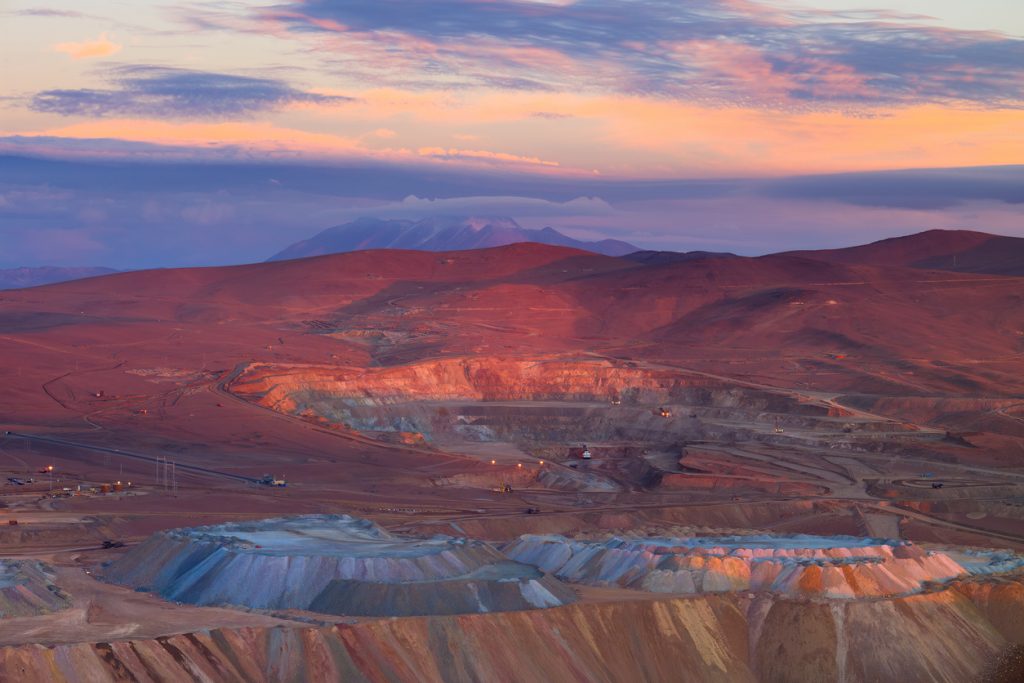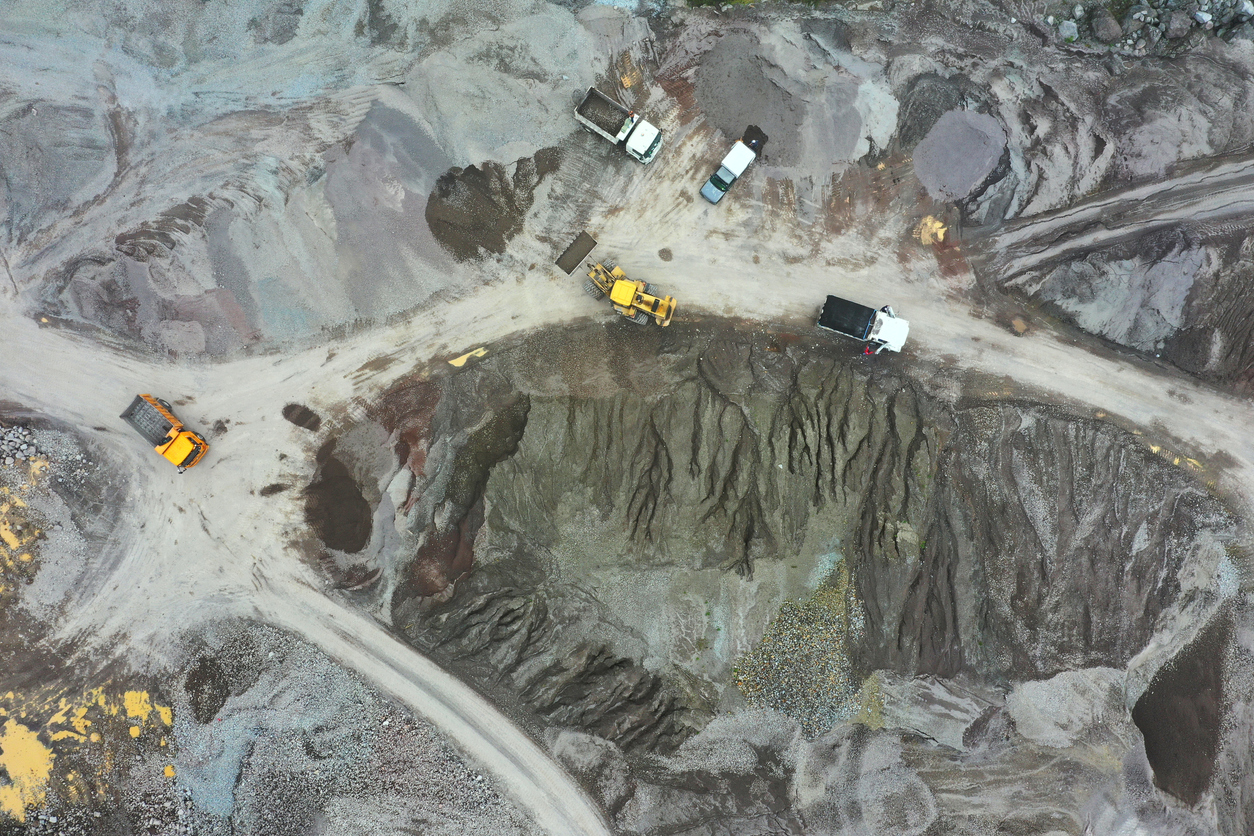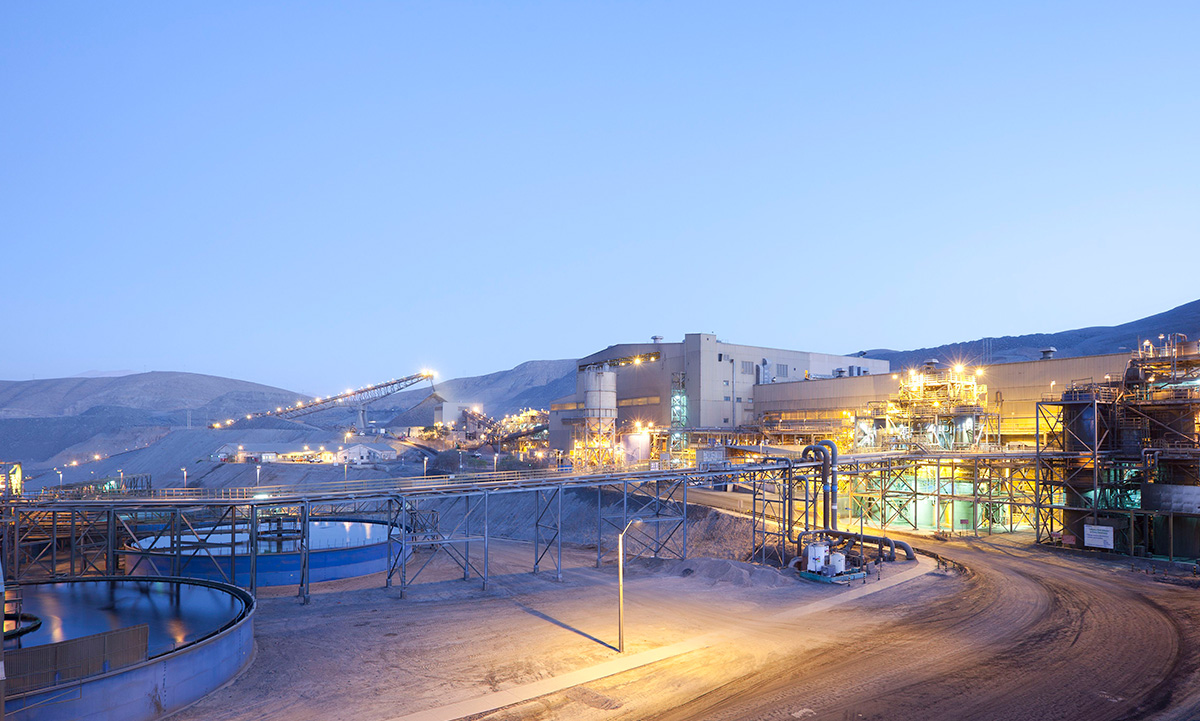
The copper mining industry plays a crucial role in the global economy, with South America being a significant contributor to the world’s copper supply. As the demand for copper continues to grow, driven by the increasing need for renewable energy and electric vehicles, exploration projects in this region have gained momentum along with some of the biggest investment interest in the past few years . In 2024, there are a few important companies actively engaged in copper exploration across various countries in South America, with promising results and future prospects.
Freeport McMoRan in Peru
Freeport McMoRan, a leading copper producer, operates the Cerro Verde copper mine in Peru. However, the company is projected to face challenges in 2024, with sales volumes expected to decrease to 1.13Blb (512,559t) of copper, compared to 1.20Blb sold in 2023. This decline is attributed to lower grades at Cerro Verde and mill recoveries falling below those in the same period of 2022. Despite these challenges, Freeport McMoRan remains committed to its operations in Peru and continues to explore opportunities for growth and optimization.
Lundin Mining Corporation: Consistent Performance and Expansion
Lundin Mining Corporation has demonstrated consistent performance in its copper exploration and production activities across South America. In the second quarter of 2023, the company produced 10,697 tonnes of copper and approximately 13,000 ounces of gold in concentrate. The Chapada mine in Brazil, one of Lundin’s key assets, achieved higher recoveries, resulting in increased copper production compared to the prior year quarter.
Looking at Lundin’s historical performance, the company produced 249,659 tonnes of copper on a consolidated basis in 2022, which was within the guidance range of 250,000 to 274,000 tonnes. In 2023, Lundin Mining achieved a record consolidated copper production of 314,798 tonnes, surpassing the guidance range of 300,000 to 320,000 tonnes.
For the three-year period from 2024 through 2026, Lundin Mining has provided production guidance for copper, with a range of 366,000 to 400,000 tonnes. This guidance is largely in line with the company’s 2023 production guidance, indicating a likely stable outlook for Lundin’s copper exploration and production.
Solaris Resources: Strategic Investments and Resource Expansion
Solaris Resources (TSX:SLS) (OTCQB:SLSSF) has proven itself as one of the most important exploration companies in South America over the past few years, with significant developments at its Warintza Project in Ecuador. The company is preparing for a major mineral resource estimate update, expected in late Q2 2024, which will leverage extensive drilling data to potentially enhance resource size and grade at Warintza Central, East, and Southeast.
In a strategic move, Solaris also announced plans to list its common shares on the NYSE American stock exchange, securing funding for exploration and development programs in 2024 and 2025. Additionally, the company received a significant investment from Zijin Mining, a major Chinese company, which provided crucial capital for ongoing activities at the Warintza Project and highlighted the project’s potential.
Zijin Mining’s investment, announced on January 11, 2024, involves the purchase of approximately 28,481,289 common shares of Solaris Resources at a subscription price of $4.55 per share, representing a 14% premium to the closing price of the common shares on the Toronto Stock Exchange (TSX) on January 10, 2024. Upon closing of the investment, Zijin Mining will own approximately 15% of the common shares on a fully diluted basis.
The investment from Zijin Mining is expected to be used by Solaris Resources to advance and develop the Warintza copper project primarily. This strategic partnership provides financial security for Solaris Resources and the expertise and growth potential of Zijin Mining, one of the most successful major mining companies in the world.
Solaris Resources continues active drilling with six rigs, focusing on resource expansion, infill drilling, and exploration beyond the current resource zones\[2\].
Copper exploration in South America remains strng in 2024, with companies like Freeport McMoRan, Lundin Mining Corporation, and Solaris Resources actively engaged in resource expansion, strategic partnerships, and sustainable operations. As the demand for copper continues to grow, driven by the global shift towards renewable energy and electric vehicles, these projects will be watched ever more closely for major announcements.
The above references an opinion and is for information purposes only. It is not intended to be investment advice. Seek a licensed professional for investment advice. The author is not an insider or shareholder of any of the companies mentioned above.

Ecuador expects to start production of four major mining projects by the end of President Guillermo Lasso’s first term in office in 2025, as he seeks to diversify the economy beyond oil exports, the Ministry of Natural Resources said on Friday. Lasso has been trying to attract private investment to boost the economy, which was in a deep recession last year, exacerbating Ecuador’s cash-strapped economy.
To do so, the President has issued a new decree, paving the way for investment in the nation and mining projects. This has the potential to open the floodgates for miners looking to expand or begin mining in the mineral-rich country.
Ecuador has rich mineral resources but lags behind its Andean neighbors Peru and Chile in the development of large mines. Many large mining projects in Ecuador face resistance from local communities and are struggling to fill informal miners who have slowed their development. However, the right approach with consultation with local communities has proven to be extremely effective. Successful projects like Solaris Resources’ (TSX:SLS) Warintza Project have been proven to be some of the most promising copper projects in the entire Andean region, and have been models of how mining companies can work hand in hand with local communities to uphold critical ESG principles.
Three gold concessions of Canadian companies Dundee Precious Metals (TSX:DPM) in Loma Largo, Atico Mining Corp (TSXV:ATY) in Plata, and Adventus Mining Corp (TSXV:ADZN) in Curipamba are in advanced exploration phase and could begin production by 2023, the Department of Energy, Non-Renewable Energy and Natural Resources said in its statement. The Cascabel concession, operated by Australia’s SolGold Plc, is expected to start copper production by 2025, the ministry added.
The largest copper mine in South America, the Mirador Project, operated by a subsidiary of the Chinese consortium CRCC Tongguan, commenced production in mid-2019. Its first major gold mine, the Canadian Lundin Gold Inc.’s (TSX:LUN) Fruta del Norte mine project, started in November this year. Its authorities expect exports of mineral resources to reach $1.6 billion a year, an increase of 7.4% from 2020.
With Ecuador positioning itself as a nation of open arms for the mining industry, it is set to catch up to, and surpass its neighbours in the coming years and decades.
The above references an opinion and is for information purposes only. It is not intended to be investment advice. Seek a licensed professional for investment advice. The author is not an insider or shareholder of any of the companies mentioned above.

Shares of Lundin Mining Corporation (TSX:LUN) (Nasdaq Stockholm:LUMI) closed down 9.4% on Monday at $10.27 after announcing that it would need to cut guidance at its copper-gold Candelaria complex in Chile. The guidance for 2021 production was cut to 150,000-155,000 of copper and 85,000-90,000 oz of gold on a 100% basis. The near-term adjustment comes after the company operated in line with forecasts to date during the second quarter of 2021 due to the short-term mining sequence in Phase 10 for the second half of the year.
The reduction hit the company and its shares hard as Candelaria originally accounted for over half of Lundin’s previous forecast 2021 guidance of 275,000-299,000 tonnes of copper and 170-180,000 oz of gold. The company took a hit knocking its market cap down to $7.6 billion
Adding New Precautionary Measures Slowing Output
The Candelaria open pit contains known fault zones, and Lundin Mining (TSX:LUN) (Nasdaq Stockholm:LUMI) is continuously monitoring these areas. Part of the change comes from the need to manage the production risks in a localized area of Phase 10 that, while nominal in volume, could eventually impact activities on lower levels of the site and on the main ramp. Reducing these risks means taking additional precautionary measures, including a wider step out in the area, mining smaller benches and with smaller blasts, and delaying mining immediately below the fault zone to later phases.
The reduction in output is the result of the additional caution during the mining process while in the Phase 10 fault zone areas. The additional measures will affect productivity and result in less ore production from the area over the remainder of 2021. The second half of 2021 is expected to return average copper mill feed grades for the Candelaria Copper Mining Complex of 0.64% from low-grade stockpiled ores. The expected feed grade for the year is 0.59% copper.
Future Guidance Uncertain
Lundin Mining (TSX:LUN) (Nasdaq Stockholm:LUMI) may need to update the outlook for the life-of-mine plan pending the outcome of a review. With these changes in mine sequence creating new impacts for the project, some further guidance may need modification. However, production outlook for the company’s other operations as well as cash-cost guidance will be provided in July along with the second quarter operating results, and these are expected to be generally the same.
The Candelaria mine has been a productive project for the company. In 2019, the company reinvested in the mine fleet to help with efficiency and bring the project into alignment with the company’s overall clean mining goals. The project goes back to 2014 when Lundin Mining (TSX:LUN) (Nasdaq Stockholm:LUMI) acquired an 80% interest and operatorship of the Candelaria Copper Mining Complex in Chile, with the other 20% owned by Sumitomo.
The above references an opinion and is for information purposes only. It is not intended to be investment advice. Seek a licensed professional for investment advice. The author is not an insider or shareholder of any of the companies mentioned above.
If you would like to receive our free newsletter via email, simply enter your email address below & click subscribe.
CONNECT WITH US
Tweets
Tweet with hash tag #miningfeeds or @miningfeeds and your tweets will be displayed across this site.
MOST ACTIVE MINING STOCKS
Daily Gainers
 |
CMB.V | +900.00% |
      |
MTB.V | +100.00% |
      |
KGD.AX | +33.33% |
      |
CASA.V | +30.00% |
      |
RG.V | +25.00% |
      |
STK.AX | +25.00% |
      |
BEA.V | +25.00% |
      |
EMU.AX | +25.00% |
      |
POS.AX | +25.00% |
      |
NAE.AX | +25.00% |

 Follow us on Twitter
Follow us on Twitter Become our facebook fan
Become our facebook fan







